Introduction: The Versatile Charm of Potatoes
In the culinary world, few ingredients boast the versatility and widespread appeal of potatoes. Known scientifically as Solanum tuberosum, potatoes have been a staple in diets across the globe for centuries, thanks to their rich nutritional profile, affordable price, and ability to transform into countless delicious dishes. From humble beginnings in the Andes Mountains of Peru, where they were first cultivated by indigenous peoples, potatoes have traveled the world, becoming a cornerstone of countless cuisines.
Whether boiled, baked, fried, mashed, or incorporated into sophisticated recipes, potatoes offer a blank canvas for creativity in the kitchen. Their neutral flavor and ability to absorb flavors make them an ideal base for a myriad of seasonings, spices, and cooking techniques. This article aims to delve into the intricacies of making delicious potato dishes, exploring various cooking methods, flavor combinations, and cultural influences that elevate this humble tuber to culinary excellence.
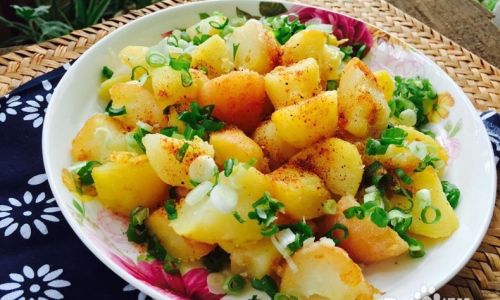
Understanding Potato Varieties: The Foundation of Flavor
Before diving into cooking techniques, it’s crucial to understand the different types of potatoes and their unique characteristics. Each variety brings its own texture, flavor, and suitability for specific dishes. Here are some of the most popular types:
-
Russet Potatoes: Known for their high starch content and fluffy interior when baked or mashed, Russets are ideal for making fries due to their ability to hold a crisp exterior while remaining soft inside.
-
Yukon Gold: These potatoes have a creamy texture and a slightly buttery flavor, making them perfect for boiling, roasting, or using in salads.
-
Red Potatoes: With a waxy texture and firm flesh, Red Potatoes hold their shape well when cooked, making them excellent for boiling, steaming, or adding to soups and stews.
-
Fingerling Potatoes: These small, elongated potatoes come in various colors and have a delicate, earthy flavor. They are often roasted or grilled, showcasing their unique shapes and textures.
-
Sweet Potatoes: Though botanically unrelated to regular potatoes, sweet potatoes are often grouped together due to their similar culinary uses. They have a sweeter taste and denser texture, making them perfect for baking, mashing, or incorporating into desserts.
Choosing the right potato for your dish is the first step towards culinary success. Understanding the unique properties of each variety will guide your cooking decisions and ensure that your final dish meets its full potential.
Basic Preparation Techniques: The Building Blocks of Deliciousness
Before transforming potatoes into mouthwatering meals, proper preparation is key. Here are some fundamental steps to ensure your potatoes are ready for cooking:
-
Cleaning: Always wash potatoes thoroughly under running water to remove any dirt or debris. Avoid soaking them in water as this can cause them to absorb excess moisture and lose flavor.
-
Peeling: While some recipes call for peeled potatoes, many dishes benefit from leaving the skin on, especially if it’s thin and free of blemishes. The skin adds texture and nutrients to the final dish.
-
Chopping: Depending on the recipe, potatoes may need to be chopped into uniform pieces. This ensures even cooking and a more appealing presentation. Use a sharp knife for precise, safe cutting.
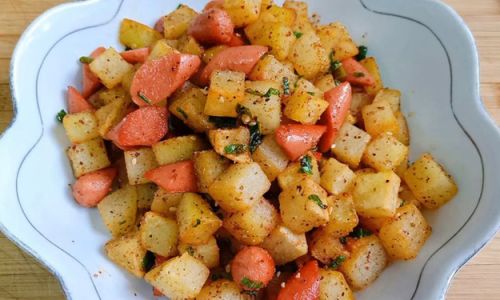
-
Soaking: For dishes like fries, soaking peeled and chopped potatoes in cold water for 30 minutes can help remove excess starch, resulting in crisper exteriors when cooked.
-
Parboiling: Some recipes call for parboiling potatoes—partially cooking them in boiling water before finishing in another cooking method. This can speed up the cooking process and ensure even doneness.
Cooking Techniques: Unlocking the Full Potential of Potatoes
With a solid understanding of potato varieties and basic preparation, it’s time to explore various cooking techniques that bring out the best in these versatile tubers.
-
Baking: One of the simplest and most popular methods, baking potatoes brings out their natural sweetness and creates a fluffy interior. Preheat your oven to 400°F (200°C), pierce the potatoes with a fork, and bake until tender, about 45-60 minutes depending on size. For extra flavor, rub the skin with olive oil, salt, and herbs before baking.
-
Boiling: Boiling potatoes is a quick and easy way to cook them, especially for salads, soups, and mashes. Use a large pot with plenty of water to ensure even cooking. Add a pinch of salt to the water to enhance flavor. Boil until tender but not overcooked, as this can make them mushy.
-
Roasting: Roasting potatoes in a hot oven with olive oil, salt, and your favorite herbs creates a crispy exterior and fluffy interior. Preheat your oven to 425°F (220°C), toss the potatoes with oil and seasonings, and spread them in a single layer on a baking sheet. Roast until golden brown and tender, about 20-30 minutes.
-
Frying: Deep-frying potatoes transforms them into crispy, golden delights like fries and hash browns. Use a deep fryer or a large, heavy-bottomed pot filled with enough oil to fully submerge the potatoes. Heat the oil to 350°F (175°C) and fry in batches until golden brown. For best results, use a thermometer to maintain the correct oil temperature.
-
Mashing: Mashed potatoes are a comfort food staple. Boil potatoes until tender, then drain and mash with butter, milk, salt, and pepper. For a richer flavor, add cream cheese, sour cream, or roasted garlic.
-
Gratin: Potato gratins are a luxurious dish that combines thinly sliced potatoes with cream, cheese, and seasonings, then baked until bubbly and golden. Layer the potatoes with cream and cheese, seasoning each layer, and bake at 375°F (190°C) until tender and golden brown on top.
-
Sautéing: Sautéed potatoes are a quick and delicious side dish. Slice potatoes thinly and sauté them in a hot pan with butter, olive oil, or another fat until crispy and golden. Add garlic, herbs, and lemon zest for extra flavor.
-
Soup and Stew: Potatoes add body and creaminess to soups and stews. They can be boiled directly in the soup base or added towards the end of cooking to maintain their texture. Potato soup, in particular, is a hearty and comforting dish that can be customized with various add-ins like cheese, bacon, or cream.
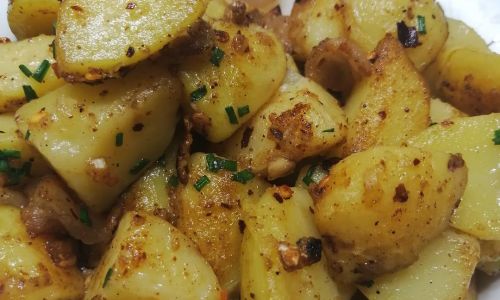
Flavor Profiles and Cultural Influences
The beauty of potato dishes lies not only in their cooking techniques but also in the diverse flavors and cultural influences that shape them. From Irish colcannon to French pommes dauphinoise, potatoes have been adapted to suit the tastes and traditions of countless cultures.
-
Irish and British Cuisine: Potatoes play a central role in Irish and British cuisine, often featuring in hearty dishes like colcannon (mashed potatoes mixed with kale or cabbage), bubble and squeak (a fried mixture of leftover mashed potatoes and vegetables), and classic roast potatoes.
-
French Cuisine: French cuisine has elevated potatoes to high art, with dishes like pommes dauphinoise (thinly sliced potatoes baked with cream and garlic), pommes frites (French fries), and ratatouille (a vegetable and potato stew).
-
Latin American Cuisine: In Latin America, potatoes are a staple in dishes like Peruvian causa (layered potato salad with avocado and seafood), Colombian arepas (cornmeal cakes often filled with potatoes), and Mexican chilaquiles (tortilla chips topped with a savory potato and tomato sauce).
-
Eastern European Cuisine: Eastern European countries like Poland, Ukraine, and Russia have a rich tradition of potato-based dishes. Pierogies (filled dumplings often with potato and cheese), plov (a Central Asian rice and potato dish), and Russian kartoshka salad (potato salad with mayonnaise and pickles) are just a few examples.
-
Asian Cuisine: While potatoes are not native to Asia, they have been adopted into various cuisines with delightful results. Japanese katsu curry features crispy pork cutlets served over a creamy potato-based curry sauce, while Indian aloo gobi (potato and cauliflower curry) and Chinese potato stir-fries showcase the versatility of potatoes in fusion cuisine.
Creative Variations and Modern Trends
As culinary trends evolve, so do the ways in which potatoes are prepared and enjoyed. Chefs and home cooks are constantly experimenting with new flavors, techniques, and presentations to keep potato dishes exciting and relevant.
-
Global Fusion: Combining elements from different cuisines, fusion dishes like Korean-inspired potato tacos or Mediterranean roasted potatoes with lemon zest and herbs, showcase the global reach of potato-based cuisine.
-
Healthy Alternatives: In response to health-conscious consumers, healthier versions of classic potato dishes have emerged. These include using olive oil instead of butter, incorporating vegetables, and reducing cream and cheese in gratins and mashes.
-
Street Food Inspirations: Street food vendors around the world have inspired innovative potato dishes. From Peruvian street corn with potatoes to Indian chaat with crispy potato cubes, these dishes bring a vibrant, casual vibe to the table.
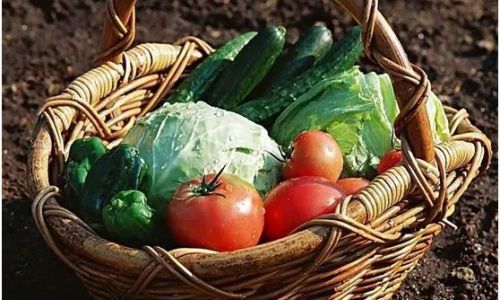
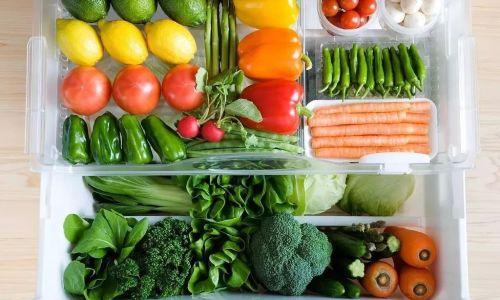
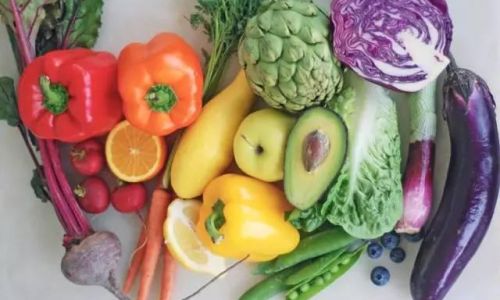


0 comments